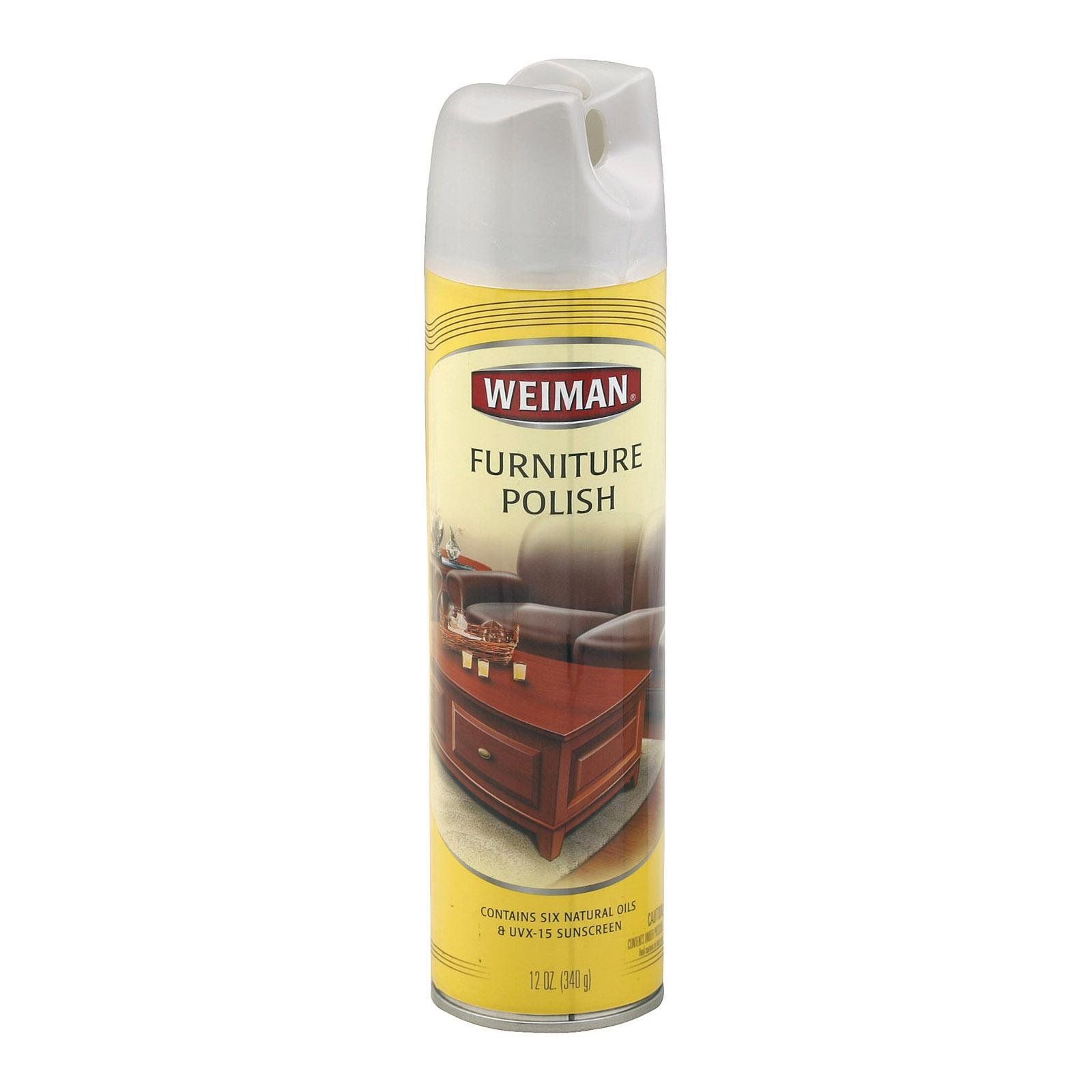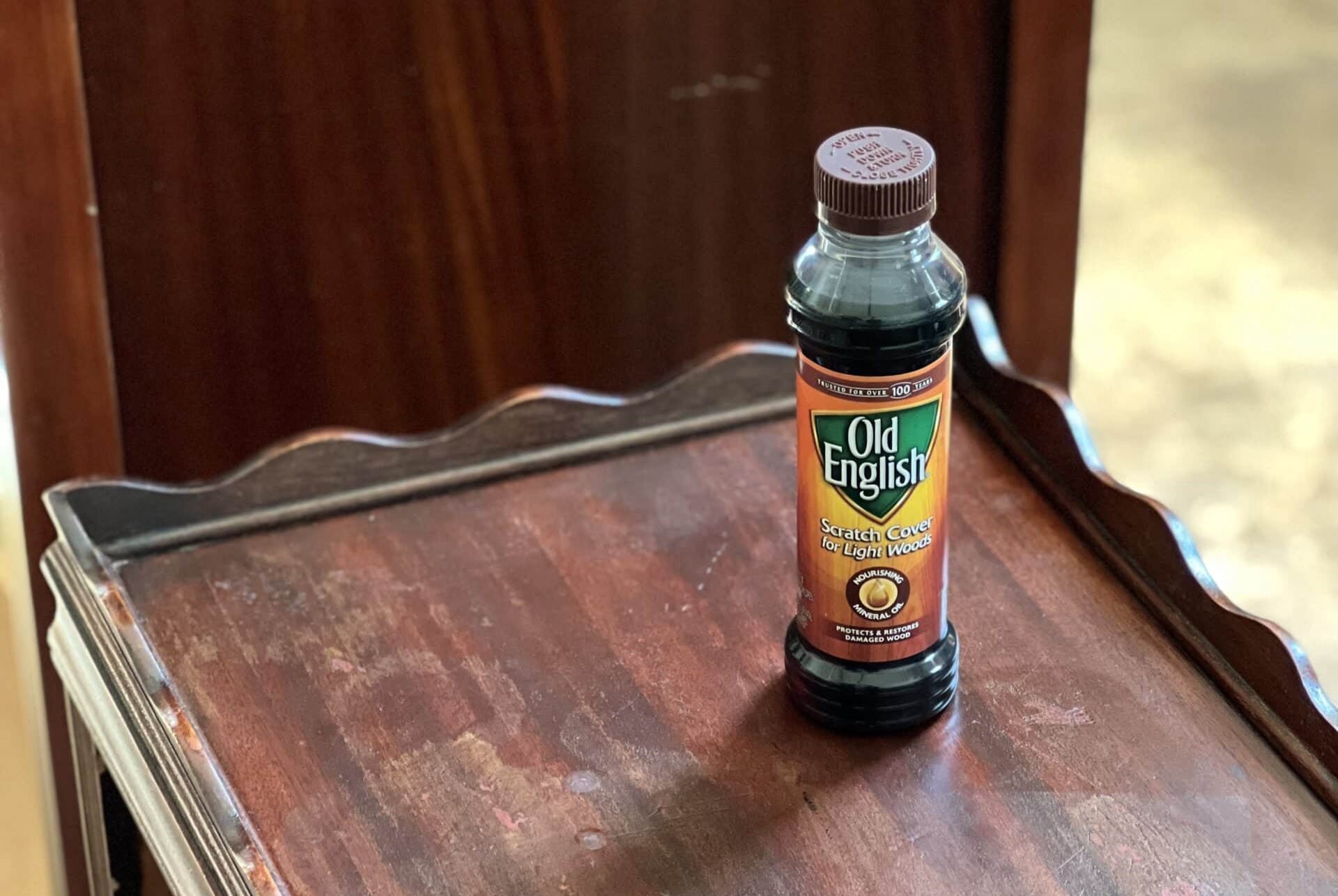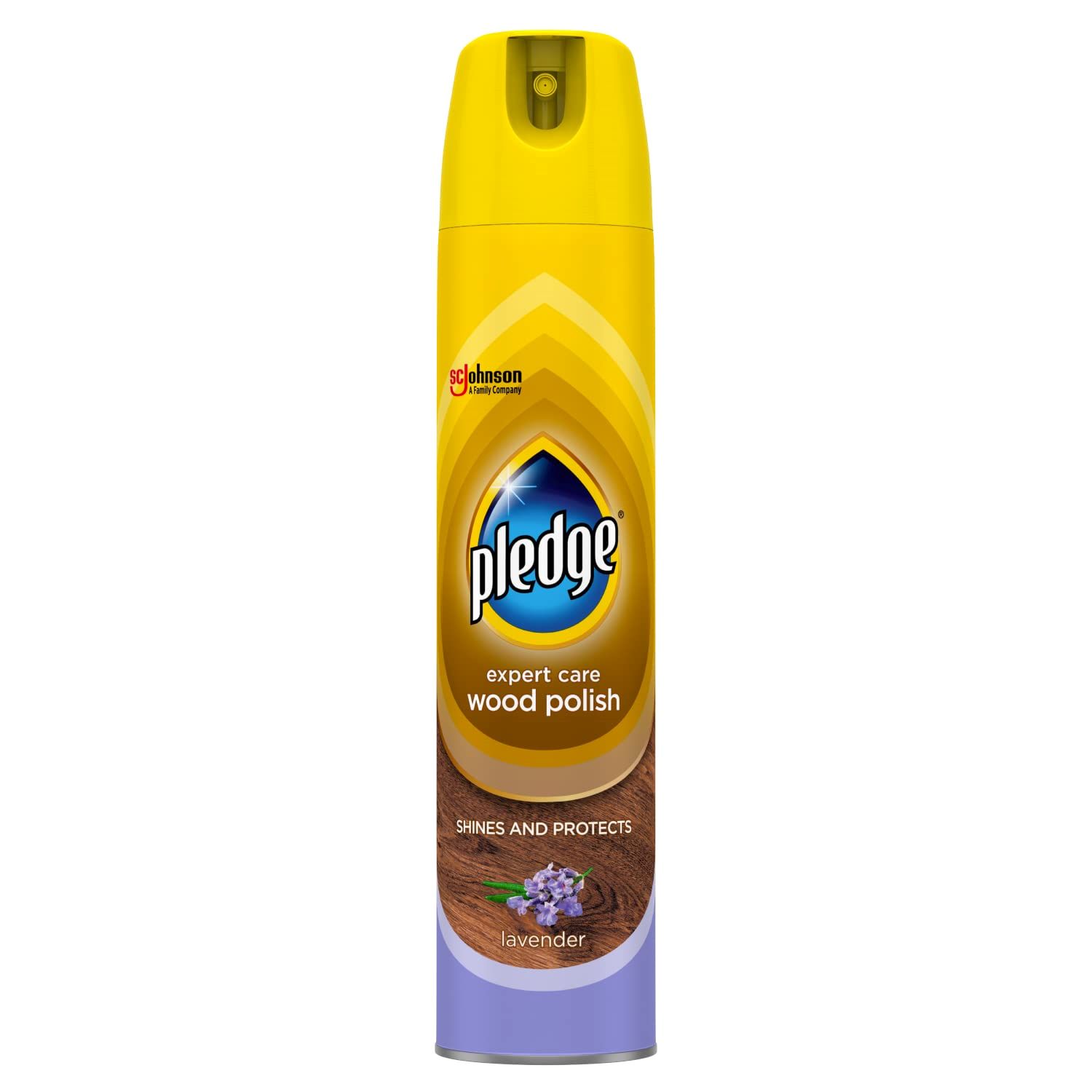Home>Gardening & Outdoor>Home DIY & Maintenance>What Is A Good Furniture Polish


Home DIY & Maintenance
What Is A Good Furniture Polish
Modified: August 17, 2024
Discover the best furniture polish for your home DIY and maintenance needs. Learn how to choose and use the right furniture polish for a sparkling finish.
(Many of the links in this article redirect to a specific reviewed product. Your purchase of these products through affiliate links helps to generate commission for Storables.com, at no extra cost. Learn more)
Introduction
When it comes to maintaining the luster and longevity of your furniture, using the right furniture polish can make a world of difference. Whether you have antique wooden pieces, modern laminate surfaces, or luxurious leather upholstery, a good furniture polish can enhance their appearance and protect them from wear and tear.
However, with the myriad of options available in the market, choosing the right furniture polish can be daunting. Understanding the various types of furniture polish, the key ingredients to look for, and the proper application techniques is essential to ensure that your furniture remains in top-notch condition.
In this comprehensive guide, we will delve into the world of furniture polish, exploring the different types available, the crucial ingredients to seek out, the correct application methods, and the numerous benefits of using furniture polish. By the end of this article, you will be equipped with the knowledge to select the perfect furniture polish for your specific needs and keep your beloved pieces looking their best for years to come.
Key Takeaways:
- Choose the right furniture polish based on your furniture’s needs and your personal preferences. Whether it’s a quick spray or a nourishing paste, there’s a polish suited to every piece.
- By using furniture polish, you not only enhance the appearance of your furniture but also provide essential protection against environmental factors and everyday wear.
Read more: What Is In Pledge Furniture Polish
Types of Furniture Polish
When it comes to furniture polish, there are several types available, each designed to cater to different materials and finishes. Understanding the distinctions between these types can help you make an informed decision when selecting the most suitable polish for your furniture.
- Spray Furniture Polish: This type of furniture polish comes in a convenient spray bottle, making it easy to apply to large surfaces. It is ideal for regular maintenance and can provide a quick shine to your furniture.
- Paste Furniture Polish: Paste polishes are thicker in consistency and are excellent for restoring the luster of older or worn furniture. They often contain a higher concentration of protective ingredients, making them suitable for providing long-lasting shine and protection.
- Liquid Furniture Polish: Liquid polishes are versatile and can be used on a variety of furniture surfaces. They are often formulated to clean, polish, and protect in one step, making them a convenient choice for busy households.
- Natural Furniture Polish: For those who prefer environmentally friendly options, natural furniture polishes made from ingredients such as beeswax, olive oil, or essential oils offer a sustainable and non-toxic alternative. These polishes can provide a beautiful sheen while nourishing the wood.
- Silicone-Free Furniture Polish: Silicone-based polishes are known to create a glossy finish, but they can pose challenges when refinishing or repairing furniture. Silicone-free polishes are recommended for antique or high-quality wooden pieces, as they allow for easier restoration in the future.
By understanding the unique characteristics of each type of furniture polish, you can make an informed choice based on the specific needs of your furniture and your personal preferences.
Ingredients to Look for in Furniture Polish
When selecting a furniture polish, it is essential to consider the ingredients that make up the product. The presence of certain key components can significantly impact the polish’s cleaning, shining, and protective capabilities. Here are some important ingredients to look for when choosing a furniture polish:
- Carnauba Wax: Known for its glossy finish and durable protective properties, carnauba wax is a popular ingredient in high-quality furniture polishes. It provides a long-lasting shine and acts as a barrier against moisture and dust.
- Beeswax: Beeswax is a natural ingredient that nourishes and protects wood, making it an excellent choice for wooden furniture. It enhances the natural beauty of the wood while offering a layer of protection against environmental elements.
- Lemon Oil: Lemon oil is often used in furniture polishes for its ability to clean, shine, and revive the appearance of wood. It also leaves behind a fresh, citrusy scent, contributing to a pleasant fragrance in the treated area.
- Almond Oil: Almond oil is valued for its ability to condition and moisturize wood, preventing it from drying out and developing cracks. It can enhance the natural grain of the wood while providing a protective layer.
- Silicone: Silicone is a common ingredient in furniture polishes, known for creating a glossy finish and providing water resistance. However, it is important to use silicone-based polishes judiciously, as excessive buildup can pose challenges for future refinishing or repairs.
- Essential Oils: Some natural and eco-friendly furniture polishes contain essential oils such as lavender, eucalyptus, or tea tree oil. These oils not only contribute to the polish’s pleasant aroma but also offer additional cleaning and antibacterial properties.
By seeking out furniture polishes that contain these beneficial ingredients, you can ensure that your furniture receives the care and protection it deserves, while also contributing to a healthier indoor environment.
When choosing a furniture polish, look for one that is specifically designed for the type of furniture you have (wood, leather, etc.). Avoid polishes with silicone or wax, as they can cause buildup and attract dust. Instead, opt for water-based or oil-based polishes for a natural shine.
How to Use Furniture Polish
Proper application of furniture polish is essential to achieve optimal results and maintain the beauty of your furniture. Whether you are polishing wood, laminate, metal, or leather surfaces, following these steps can help you achieve a professional finish:
- Preparation: Begin by dusting or gently wiping the furniture surface with a soft, dry cloth to remove any loose dirt or debris. This initial step ensures that the surface is clean and ready to be polished.
- Test in an Inconspicuous Area: If you are using a new polish or applying it to a delicate or valuable piece of furniture, it is advisable to test a small amount in an inconspicuous area to ensure compatibility and to observe any adverse reactions.
- Application: Apply a small amount of furniture polish onto a clean, soft cloth or a polishing pad. Avoid over-spraying or over-applying the polish, as excess product can lead to streaks or a greasy residue.
- Even Distribution: Gently rub the polish onto the furniture surface using circular motions, ensuring even distribution across the entire area. Pay special attention to any intricate details or carvings, making sure that the polish reaches all the nooks and crannies.
- Buffing: Once the polish has been applied, use a separate clean cloth to buff the surface, removing any excess polish and revealing a smooth, lustrous finish. Buffing also helps to evenly distribute the polish and enhance the shine.
- Final Inspection: Take a moment to inspect the polished surface for any streaks, smudges, or missed spots. If necessary, gently buff any remaining imperfections until the desired shine is achieved.
By following these simple yet effective steps, you can ensure that your furniture receives the care and attention it deserves, resulting in a beautifully polished and protected surface.
Benefits of Using Furniture Polish
Regular use of furniture polish offers a multitude of benefits that go beyond simply enhancing the appearance of your furniture. Whether you are preserving the natural beauty of wood, protecting delicate surfaces, or maintaining the overall condition of your furniture, the advantages of using furniture polish are numerous:
- Enhanced Appearance: Furniture polish can effectively remove dust, fingerprints, and smudges, leaving behind a clean and polished surface that showcases the natural beauty of the material.
- Protection from Wear: The protective ingredients in furniture polish create a barrier against moisture, UV rays, and everyday wear and tear, helping to prevent damage and extend the life of your furniture.
- Nourishment for Wood: For wooden furniture, the conditioning and nourishing properties of certain polishes can help prevent drying, cracking, and fading, preserving the integrity of the wood over time.
- Restoration of Luster: Furniture polish can revive dull or worn surfaces, restoring their luster and depth of color. This is particularly beneficial for older or well-loved furniture pieces.
- Reduced Dust Attraction: Some furniture polishes contain anti-static properties that can help repel dust, reducing the frequency of cleaning and maintenance required for your furniture.
- Fresh Fragrance: Many furniture polishes impart a pleasant fragrance, leaving your living spaces smelling clean and inviting after each application.
- Convenience and Efficiency: Using furniture polish is a quick and efficient way to maintain the appearance of your furniture, making it an essential part of regular cleaning routines.
- Preservation of Value: By keeping your furniture in top condition, you can help preserve its value, making it an investment that will continue to bring beauty and functionality to your home for years to come.
By understanding the diverse range of benefits that furniture polish offers, you can appreciate its role in safeguarding and enhancing the beauty of your furniture, making it an indispensable tool in your home maintenance arsenal.
Read more: How To Make Beeswax Furniture Polish
Conclusion
Choosing the right furniture polish and applying it with care can make a significant impact on the longevity and appearance of your cherished furniture pieces. By understanding the various types of furniture polish, the key ingredients to look for, and the proper application techniques, you can ensure that your furniture receives the care and protection it deserves.
From spray polishes for quick touch-ups to paste polishes for deep restoration, the diverse range of options allows you to tailor your approach to the specific needs of each piece of furniture. Whether you seek the glossy finish of silicone-based polishes or the natural nourishment of beeswax and essential oils, there is a polish suited to every preference and material.
When using furniture polish, you not only enhance the appearance of your furniture but also provide essential protection against environmental factors and everyday wear. The benefits of using furniture polish extend beyond aesthetics, offering a means to preserve the value and integrity of your furniture for years to come.
By incorporating furniture polish into your regular cleaning and maintenance routine, you can enjoy the beauty and functionality of your furniture while safeguarding its condition. Whether you are a seasoned antique collector or a homeowner with modern furnishings, the right furniture polish can be a valuable ally in your quest to maintain a beautiful and inviting living space.
With the knowledge gained from this guide, you are well-equipped to select the perfect furniture polish for your needs, apply it effectively, and reap the numerous benefits it offers. Embrace the art of furniture care and enjoy the enduring beauty of your treasured pieces for generations to come.
Frequently Asked Questions about What Is A Good Furniture Polish
Was this page helpful?
At Storables.com, we guarantee accurate and reliable information. Our content, validated by Expert Board Contributors, is crafted following stringent Editorial Policies. We're committed to providing you with well-researched, expert-backed insights for all your informational needs.















0 thoughts on “What Is A Good Furniture Polish”